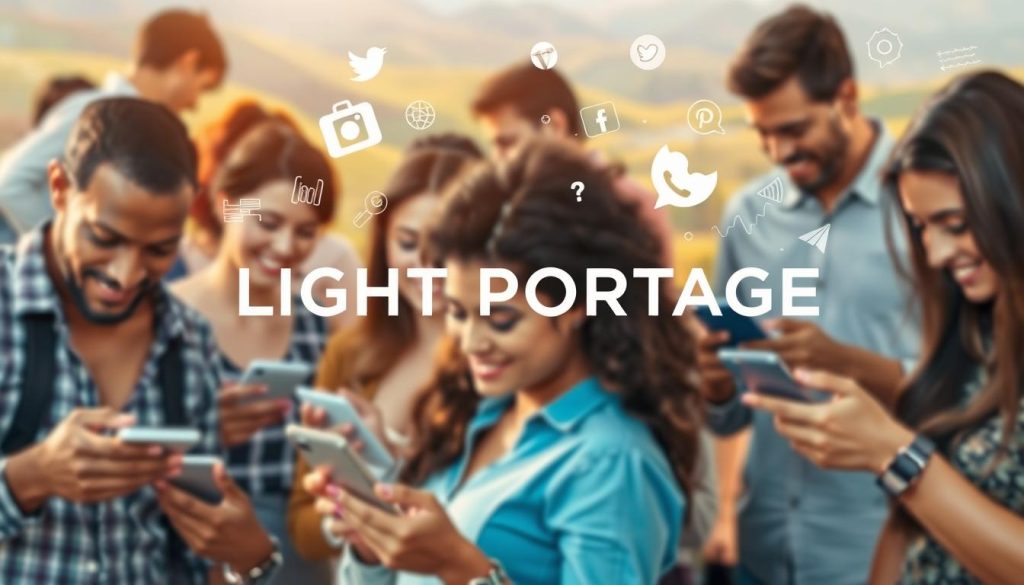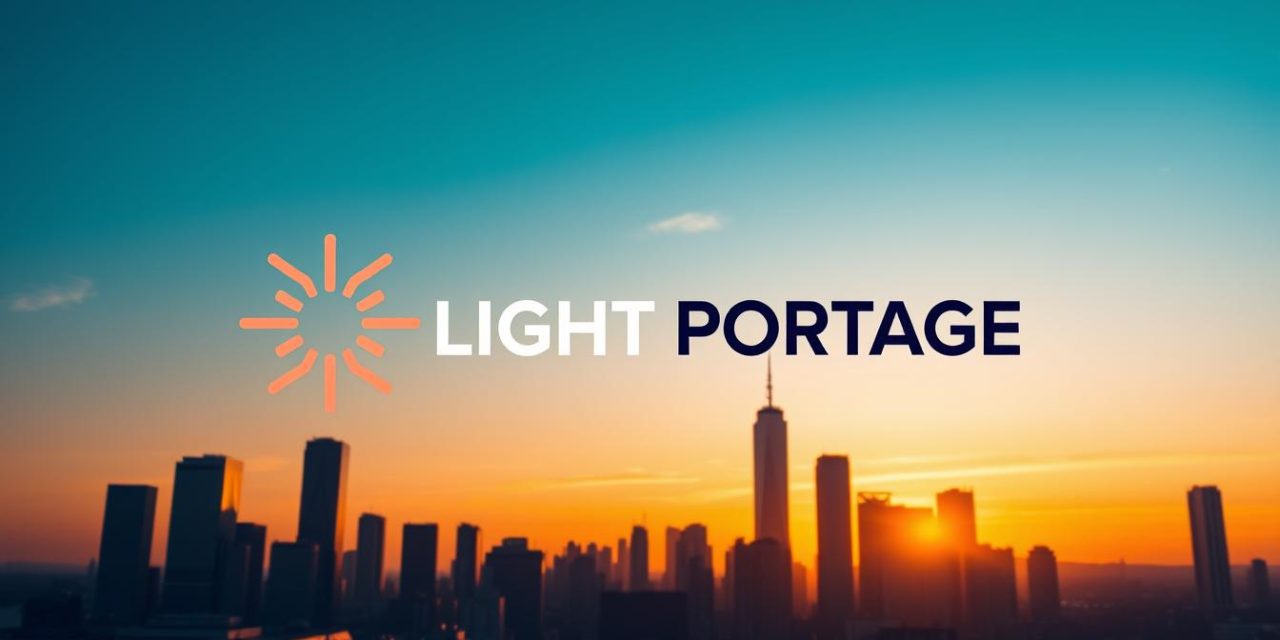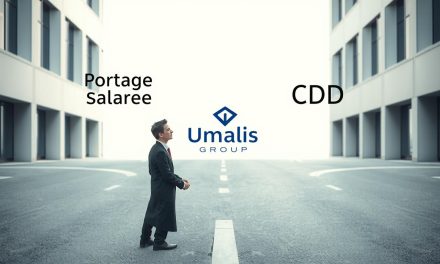We help independent professionals stand out in a crowded French market where choices are many and attention is short. I remember a freelancer who lost repeat work simply because clients could not recall her name after a busy trade fair. She had great services but no consistent visibility.
That small story shows why a clear approach matters. This guide explains practical steps to make your brand more memorable. We focus on SEO, social media, influence, sponsorship, and interactive content like quizzes and webinars.
You will see how stronger presence improves discovery, builds trust with your audience, shortens sales cycles, and lowers acquisition costs for your services. We use examples from Zoom, Red Bull, and Airbnb to show what works and how you can adapt tactics to your service offering.
Table of Contents
Key Takeaways
- Visibility must be consistent across channels to build recall.
- Practical, low-budget tactics can deliver measurable results.
- Combine content, SEO, and social for compounded growth.
- Measure recall, branded search, and social signals.
- Start this week with one small, sustained action.
What Brand Awareness Is and Why It Matters Right Now
Being recognized changes how prospects find and choose you. In France’s crowded market, the degree of recognition you earn determines whether a need leads to a call or a competitor. La notion de brand awareness here means spontaneous identification for a product or service.
Recognition vs. image: perception and recall
Recognition is about recall. Image is about feelings, reviews, and perceived quality. Both are distinct levers you must manage together.
We protect recognition through consistent cues and protect image through reliable delivery and honest proof from clients. This alignment avoids a gap between visibility and perception.
Why this matters now: practical benefits
- More visibility: Better organic discovery on search and social reduces paid pressure.
- Greater trust: Familiar names earn consideration before first contact.
- Higher conversion: Clear recognition shortens the sales path and raises close rates.
- Lower acquisition costs: Referrals and branded queries cut marketing spend over time.
In volatile markets, familiarity stabilizes demand and protects margins.
We recommend simple communication standards—voice, claims, and proof points—so growth in recognition matches the client experience. This keeps perception credible and sustainable.
How Brand Awareness Fits Into the Marketing Funnel
Start by mapping how attention turns into action across the funnel. At the top, you earn a first impression with a clear promise and a positive experience. That initial exposure sets the tone for what follows.
Top-of-funnel: attention to consideration to conversion
Top: capture attention with light, inspiring assets that invite curiosity.
Consideration: prospects narrow options. Companies with existing brand recognition skip introductions and focus on value, proof, and comparisons that matter to the client.
Conversion: when credibility is pre-built, friction falls and the sale becomes the natural next step.
Why existing associations give you an edge in purchase decisions
Associations act as mental shortcuts. Two sellers offer the same TV at the same price; the known name gains instant trust. Over time, repeated, coherent touches compound into recall.
- Map content to each part of the journey: light awareness, deep comparison, precise proof.
- Connect top activity to mid and late signals—newsletter sign-ups, downloads, calls booked.
- Prioritize channels that reach your exact audience to protect time and budget.
Being the first name people think of gives a clear competitive edge.
Measuring Performance: Practical KPIs to Track Awareness
Measure what matters: clear KPIs turn impressions into actionable signals. Use a compact set of indicators so you can act quickly and with confidence.
Consumer studies: spontaneous and assisted recall
Run short recall surveys with open questions like “Which name comes to mind for sweet carbonated drinks?” to capture spontaneous recall.
Then add assisted prompts to measure recognition when names are listed. Open-ended replies give cleaner signals for tracking progress.
Organic demand signals: branded SEO queries and Google Trends
Track monthly branded search volume. Rising queries that include your name indicate real demand and validate upstream marketing efforts.
Use Google Trends to compare share-of-search with peers and spot seasonality or campaign impact.
Social audience and listening
Compare follower size with competitors, but dig deeper. Social listening reveals sentiment, themes, and share of voice.
Monitor profile visits, saves, DMs, and inbound inquiries from qualified client profiles. These are mid-funnel signs that recognition becomes intent.
« What you measure consistently improves. Keep metrics lean and tied to decisions. »
- Build a simple dashboard: recall score, branded queries, trends index, followers, sentiment, and qualified leads.
- Set quarterly targets and backcast activity to meet them.
Craft a Clear Mission, Message, and Positioning for Your Audience

Use a simple evaluation model to refine your mission and align it with real client needs. This makes the mission a practical filter for decisions, not a slogan.
Align your mission statement to your services and client expectations
Map services to mission. Remove offerings that dilute focus and sharpen the core service so clients instantly see the fit.
Mirror client language. Use the words your clients use to describe problems. That increases resonance and recall with your audience.
- Build a one-page positioning statement: target audience, category, unique edge, reasons to believe.
- Document tone, claims, and proof for consistent execution across site and proposals.
- Pair positioning with a simple privacy and consent step when you collect personal data.
« A clear message that clients understand outperforms a clever line they forget. »
Revisit positioning quarterly and tie it to marketing metrics. For a practical guide to shaping your positioning and message, see our recommended resource: positioning checklist for independent professionals.
Content Marketing and SEO: The Engine for Sustainable Awareness
Good content answers real questions; SEO ensures those answers are found.
Plan with intent. Build a quarterly content plan based on real queries your audience asks. Prioritize topics that clarify your approach and set your brand apart.
Plan articles, guides, and educational posts
Publish deep articles and concise guides that solve a problem end-to-end. Comprehensive pieces earn shares and repeat visits, which compound brand awareness.
On-page optimization for your site
Apply intent-matched titles, structured headings, internal links, fast load times, and schema. These basics strengthen both branded and non-branded reach and boost credibility.
Interactive formats to boost engagement
Introduce quizzes, webinars, and infographics to lift engagement and shareability. Use storytelling in case studies to show how your service produced concrete results.
- Balance pillar pages with supporting posts so search engines and readers map your expertise.
- Repurpose assets across site, newsletter, LinkedIn, and YouTube to extend reach without extra cost.
- Build lead magnets tied to your services and nurture subscribers with useful content.
« Publish reliably. Education today becomes preference tomorrow. »
| Action | Why it works | Quick metric |
|---|---|---|
| Quarterly content plan | Focuses topics on real queries and priorities | Topics published per quarter |
| Pillar + supporting posts | Shows depth and helps search engines understand scope | Internal links per pillar |
| Interactive formats | Boosts engagement and shareability | Average session duration |
| On-page SEO fixes | Improves visibility for both branded and non-branded terms | Organic traffic growth |
For practical steps on creating engaging pages and posts, see our content creation guide.
Social Media Strategies to Drive Recognition and Interactions

A clear social routine turns casual viewers into a repeat audience over time. Use fast, visual formats to show your message and value quickly. Short videos and stories capture attention in busy feeds.
Short-form video, stories, and timely posts to amplify impact
Prioritize short-form video and stories that highlight one idea per clip. Ship timely posts tied to trends or industry news and add your perspective.
This keeps your marketing relevant and helps your audience see you as a dependable voice.
Community management: daily communication that sparks conversations
Respond quickly to comments and DMs. Ask simple questions and use polls to encourage interactions.
Daily engagement builds trust with prospective clients and turns passive followers into leads.
Contests and challenges that expand your audience
Run lightweight contests that invite user-generated content. Set clear rules, ethical prizes, and track participant growth.
Repurpose contest clips and webinar highlights to reinforce recall and extend the life of top posts.
- Cadence: three educational posts, one case insight, one live Q&A weekly.
- Format mix: polls, question stickers, carousels for feedback and learning.
- Measure: monitor comments and DMs alongside metrics to judge true engagement.
« Consistent, human social activity turns visibility into meaningful interactions. »
Influencers and Public Relations: Credibility Through Associations
Well-chosen collaborations bring expert validation and real visibility in the French market. Start by privileging creators who share your values and speak to the same clients you serve. Authenticity beats raw reach when your objective is credible brand recognition that converts.
Select authentic creators over sheer follower counts
Evaluate partners by content quality, audience trust, and past results—not follower totals. Ask for examples of conversions and long-form content that shows expertise.
Tip: pick creators whose tone matches your communication and who can present concrete case outcomes.
Earned media: niche podcasts, trade blogs, and press mentions in France
Pitch systematically to niche podcasts, trade blogs, and relevant French press. These outlets deliver third-party proof and improve discoverability.
Prepare a lean media kit with positioning, topics, and case metrics. Treat each appearance as reusable content: clips, quotes, and articles extend the credibility halo.
- Make partnerships part of your annual plan with clear goals (reach, backlinks, referrals).
- Align messaging so your core claims never drift, whoever speaks on your behalf.
- Measure quality over vanity: referral fit, lead quality, and sales-cycle lift show real ROI.
« Repeated, value-rich appearances build familiarity that compounds into trust. »
Sponsorships and Partnerships That Elevate Your Brand Image
Sponsorships work best when they create real moments of connection, not just logo exposure. Choose events and partners that match your mission so every appearance strengthens your image with the right audience.
Events, sports, and conferences aligned with your mission
Sponsor conferences or local sports that your clients attend. This reaches a targeted audience and helps you appear where decisions are made.
Tip: build an activation plan with speaking slots or demos. That converts passive visibility into conversations.
Digital sponsorships: newsletters, streamers, and YouTube channels
Explore newsletter placements, streamer collaborations, and YouTube partnerships where your niche spends time. Track referral quality with UTM links and unique codes.
Measure leads, not just impressions. Quality referrals tell you if the partnership moves prospects toward a purchase.
Cause marketing and CSR to strengthen perception and trust
If you sponsor causes, select initiatives that genuinely match your values. Authentic commitment improves public perception and builds emotional ties with clients.
Vetting partners preserves trust—avoid opportunistic pairings that could harm your image.
- Define objectives: reach, lead generation, or relationship building.
- Capture assets: photos, videos, and interviews for post-event ROI.
- Prefer depth: a few high-fit partnerships beat many low-fit placements.
« Negotiate measurement access and review partnerships annually to keep what elevates your image and stop what does not. »
For a practical guide to consolidating your public image and aligning sponsorships with strategic goals, see our consolidation resource.
From Insight to Action: What We Can Learn from Zoom, Red Bull, and Airbnb
Practical lessons from global successes show how small changes create big results. We draw three clear playbooks you can try in France, each focused on a single, measurable outcome.
Zoom: frictionless onboarding that converts
Zoom benefited from sudden demand by offering a simple, reliable experience and a freemium route to adoption. That ease sparked rapid word-of-mouth and lifted brand recognition.
Action: simplify first use—free guides, a clear booking flow, and fast support so clients see value in the first session.
Red Bull: storytelling as a content engine
Red Bull built an ecosystem with bold storytelling and performance-driven content. Events and a dedicated media arm created repeatable moments that kept attention high.
Takeaway: produce a recurring content series that showcases outcomes and expertise instead of pure promotion.
Airbnb: community-led positioning and experience
Airbnb made its offering about belonging and local experience. Partnerships with events helped the company become synonymous with an alternative stay.
Apply this: create community touchpoints—forums, live sessions, or cohorts—so clients associate your name with learning and belonging.
« Choose the part of each playbook that fits your capacity: simplify onboarding, invest in signature content, and cultivate community. »
Turn these insights into measurable pilots. Run one small initiative per quarter with a clear hypothesis and metrics. Iterate quickly based on client feedback to compound what works and stop what does not.
Conclusion
A clear, repeatable plan turns sporadic attention into steady growth.
Brand awareness supports recognition and growth: a known name inspires trust, attracts more clients, and converts more easily. Keep your message consistent and make first experiences effortless so every interaction strengthens your image.
Choose one channel initiative and one measurement improvement from this guide and put them into action this week. Commit to a sustainable cadence across content, social, and partnerships; consistency converts attention into opportunity.
If you want structured support, we can co-create a quarterly plan, define KPIs, and build the assets that move the needle. See our practical client management tips to protect relationships as visibility grows and to maximize impact.
FAQ
What does "brand awareness" mean and why does it matter now?
Brand awareness refers to how well your target audience recognizes and recalls your services. Right now, higher recognition shortens the buyer’s journey, reduces acquisition costs, and builds trust that supports conversion — especially for independents seeking steady client flow.
How is brand awareness different from brand image and perception?
Awareness is about recognition and recall; image and perception describe what people think and feel about your offer. Both interact: solid awareness gives you opportunities to shape positive perception through consistent messaging and service delivery.
What are the main benefits of investing in awareness?
Key benefits include greater visibility, stronger trust, higher conversion rates, and lower paid acquisition costs. It also creates durable competitive advantage by making your services top-of-mind when clients decide.
How does awareness fit into the marketing funnel?
Awareness sits at the top of the funnel to attract attention, then supports consideration through informative content and social proof, and finally aids conversion by leveraging existing associations and trust.
Why do existing associations help when clients make purchase decisions?
Associations—such as endorsements, partnerships, or consistent messaging—reduce perceived risk. Clients rely on signals they already know to choose providers, so positive associations speed decisions and increase willingness to pay.
Which KPIs should I track to measure awareness performance?
Track spontaneous and aided recall from consumer studies, branded search volume, Google Trends signals, social audience growth, engagement rates, and sentiment via social listening. Combine metrics for a full view.
How do I run simple consumer studies for recall?
Use short surveys that ask respondents to name providers in your category (spontaneous recall) and to select familiar names from a list (aided recall). Keep samples relevant to your target audience and repeat quarterly to spot trends.
What organic signals indicate rising demand for my name?
Increases in branded SEO queries, search volume on Google Trends, direct traffic to your site, and higher mentions across forums and social channels are strong organic indicators of growing demand.
How should I craft my mission and message to align with client expectations?
Define a mission that ties your service outcomes to real client needs. Use clear positioning statements, explain tangible benefits, and ensure every touchpoint communicates the same promise to avoid mixed signals.
What content types best fuel sustainable awareness?
Educational articles, practical guides, and long-form posts that answer real queries perform well. Complement them with interactive formats — webinars, quizzes, and infographics — to increase engagement and retention.
How do I optimize on-page content for both branded and non-branded reach?
Use keyword-driven headings, clear meta descriptions, and content that answers search intent. Create pillar pages for core services and interlink supporting articles to capture both discovery and branded searches.
Which social strategies most effectively boost recognition and interaction?
Short-form video, timely stories, and daily community management spark attention. Pair these with targeted contests or challenges to expand reach and encourage user-generated content that amplifies credibility.
How should I manage community communication to improve engagement?
Respond promptly, use a consistent tone aligned with your mission, and encourage dialogue with open questions. Track recurring concerns and turn them into content or service improvements.
How do I choose influencers or creators for authentic partnerships?
Prioritize creators whose audience and values match yours. Evaluate engagement quality, relevance of past content, and alignment with your mission rather than raw follower counts.
What earned media channels should independents target?
Focus on niche podcasts, trade blogs, and industry press that reach decision-makers in your sector. Local and sector-specific outlets often deliver higher-quality leads than mass media.
Which sponsorships or partnerships deliver the best perception lift?
Events, conferences, and digital sponsorships (newsletters, relevant streamers) aligned with your mission yield stronger perception gains. Cause marketing and CSR partnerships also enhance trust when authentic and measurable.
Can you give examples of effective awareness strategies from known companies?
Zoom scaled through a simple UX and freemium model that encouraged word-of-mouth. Red Bull built a performance-focused content ecosystem with strong storytelling. Airbnb leaned on community-led marketing and experiential positioning.
How do I prioritize actions if my resources are limited?
Start with low-cost, high-impact moves: optimize your site for search, publish three to five helpful articles, and maintain consistent social presence. Test one interactive format and one partnership to evaluate ROI before scaling.
How long before I see measurable results from awareness efforts?
Organic awareness typically shows early signals in 3–6 months (search volume, social growth). Meaningful shifts in recall and perception often require 6–12 months of consistent effort and measurement.
How should I report awareness results to stakeholders?
Combine quantitative KPIs (recall rates, branded searches, traffic, engagement) with qualitative insights (sentiment, customer feedback). Present trends, clear actions taken, and next steps tied to measurable goals.





